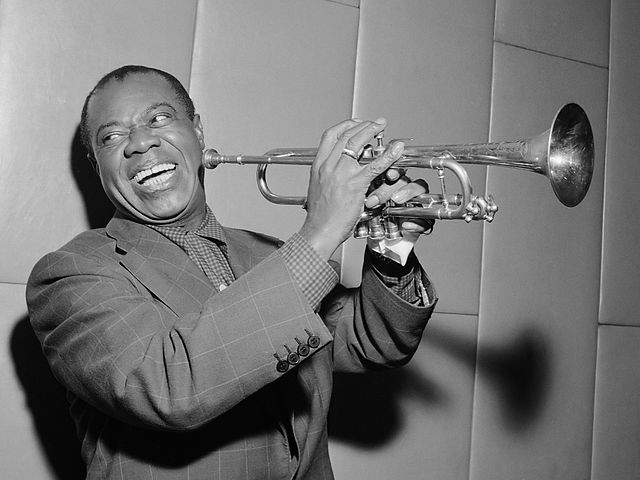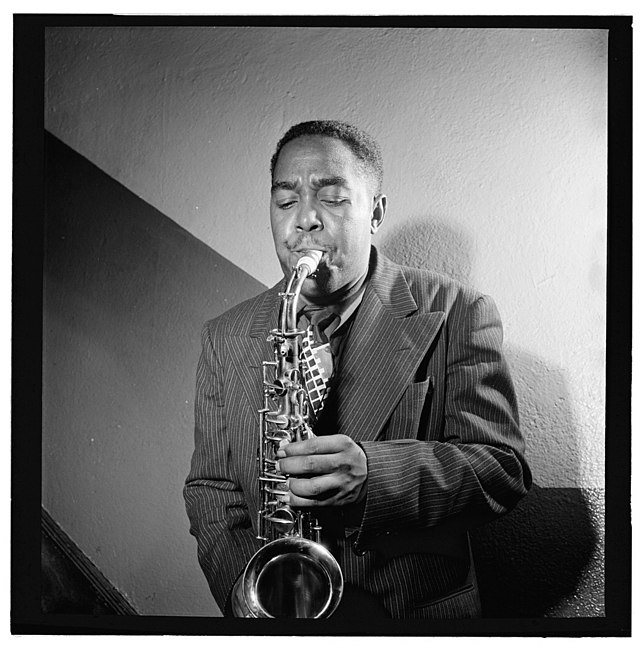
Louis Armstrong performing in Amsterdam, 1955. Herbert Behrens
By Lily Cole | Deputy Editor
As we enter the month of February, it’s vital to appreciate Black History Month and acknowledge the events that have shaped American culture today.
According to the Smithsonian Museum, this year’s theme is “African Americans and the Arts.” While the culture has shaped many things, jazz music is one of the most influential that comes to mind.
Historical impact
The music’s roots date back to the 19th century when it was used as a voice for African Americans. It paved the way for artistic expression.
Most historians view jazz as blending ragtime, blues, and marching bands. It incorporates these styles’ musical components and their shared sounds plus emotions.
As the years went on, the shaping of the genre itself was changed, and new sounds were incorporated as artists began adding their sounds to music and embracing new musical concepts.
Artero Wilson, an African American history professor at WCC, said jazz has influenced the United States and the black community, furthering the movement for equal rights.
“In the Roaring Twenties, the Jazz Age, it [jazz] broke racial barriers by providing a platform for interracial collaboration, challenging segregation,” Wilson wrote of the history in an email correspondence.
According to the Jazz Observer, “the ‘Roaring Twenties,’ with prohibition, speakeasies, flappers, and music, drove jazz into the mainstream and made overnight success stories of musicians such as Louis Armstrong, Duke Ellington, and Count Basie.”
These musicians shaped the genre and became symbols for the black community, defying racial stereotypes and helping the genre evolve into new styles of improvisation, bebop, swing, and more.
Wilson said over email that “through improvisation, jazz mirrored the resilience of the black community, adapting to adversity and transforming pain into art.”
He said jazz played a pivotal role during the Civil Rights Movement, serving as a soundtrack to the struggle and fostering unity.
“Nothing is negative about jazz,” Wilson said in an interview with the Voice. “I see it as God’s voice being displayed through phenomena.”
As decades passed, the genre moved from a Southern-curated tune to something the whole country could appreciate. When people moved North, music followed. It became a cultural exchange and enhanced communities’ diversity.
Without jazz, music would not be the way it is today.
It is the foundation of music.
The freedom to use sound as a voice influenced modern genres like hip-hop, R&B (rhythm and blues), and even rap.
“Jazz’s impact extends beyond music, influencing literature, visual arts, and dance–leaving an enduring legacy that celebrates individuality, freedom, and the power of cultural fusion,” Wilson said.
WCC contributions
Jazz music has a special place in the campus’ history. The Morris Lawrence Building was named after a longtime jazz orchestra instructor at WCC. The late Lawrence began his music career in New Orleans and later led the WCC jazz orchestra in performances around the country, according to previous Voice reporting.
As of this year, WCC offers creative jazz and improvisation taught by Steven Somers, who has been teaching on a regular basis since 2015.
Somers was a member of Eastern Michigan University (EMU)’s jazz band in 1986, which helped curate a movement from classical to jazz training.
Somers’ main instrument is the guitar, and he said that jazz, or music in general, is a form of expression.
Before jazz, the classical genre dominated–it used to be where the accompaniment was written ahead of time and played exactly as-is. However, jazz changed this as it would incorporate spontaneous solos which showcases how expressive jazz can be.
WCC also has jazz ensembles, usually directed by Somers.
“We strive for a diverse lineup–women, African Americans–everyone,” said Somers.
The ensembles perform concerts regularly. WTMC students are welcome to join the Music Society overseen by Somers, where music is played frequently. This club caters to WTMC students only.
WCC Jazz Ensemble Concert- Monday, April 29 / 7 pm (class MUS 105-106)
Guest artists include: WTMC Music Society
and Ypsilanti Youth Orchestra Jazz Combo (directed by Steven H. Somers).
Somers said, “we’re always looking for more musicians like trombones, saxophones, and even violins.”

Charlie Parker performing at Carnegie Hall in 1947. William Gottlie
Jazz history
A timeline of jazz’s major contributions to black history
Information sourced from Jazz in America
1892
The first known ragtime composition, “Harlem Rag,” was created by Tommy Turpin.
1904
Buddy Bolden, a cornetist, begins to develop a reputation in New Orleans for playing music that blends ragtime and blues.
1913
The word “jazz” first appears in print.
1924
Louis Armstrong plays in Fletcher Henderson’s Orchestra, and his sax playing significantly evolved.
1932
Duke Ellington records “It Don’t Mean a Thing (If it Ain’t’ Got That Swing)”, the first jazz composition to use swing in the title.

Billie Holiday singing in Downbeat club in New York City. William P. Gottlie
1939
Billie Holiday records “Strange Fruit”, with controversial lyrics relating to the mistreatment of African Americans. It was banned on several radio stations.
1973
Herbie Hancock, a jazz keyboardist, records a jazz-rock fusion album “Headhunters”. The albums break all jazz records.
1983
Trumpeter Wynton Marsalis wins a jazz and classical Grammy Award.
1986
Jazz education and outreach organization “Thelonious Monk Institute of Jazz” established in memory of the jazz legend.
1964
Miles Davis’ final album, “Doo-Bop”, which features rap, is released.
1996
Jazz at Lincoln Center becomes apart of its program.
1997
Wayne Shorter wins a Grammy Award for his electric jazz album “High Life”.
2003
A new development in jazz, “jazztronica” (combining improvisation, 1980s fusion era groove, and studio electronics) becomes a big part of the genre.
2009
Jazz musician Duke Ellington becomes the first black American to be prominently featured on a U.S. coin in circulation with the release of a quarter honoring the District of Columbia.
2011
Bassist Esperanza Spalding wins the Grammy Award for Best New Artist on the strength of her 2010 release “Chamber Music Society”, she is the first and only jazz artist to have received that honor.
2020
Drummer Terri Lyne Carrington was named Jazz Artist of the Year by DownBeat magazine, becoming the first female instrumentalist to be bestowed this honor.

